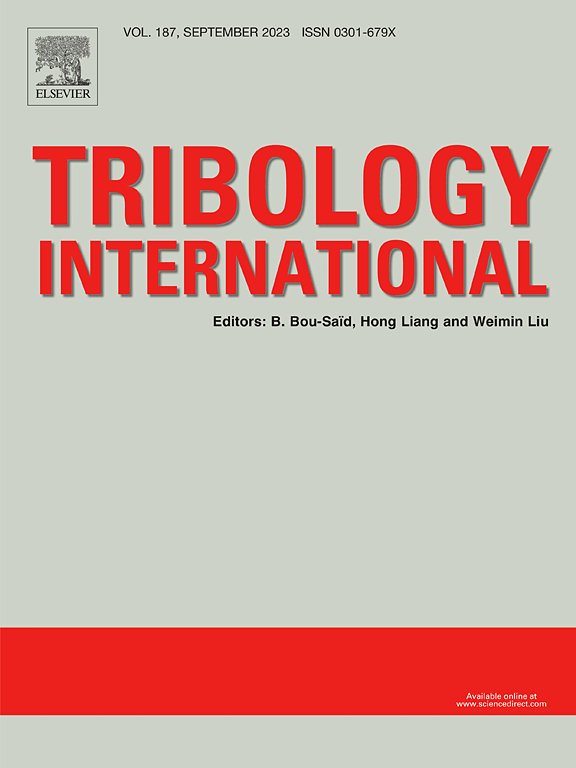Improving wear resistance of TA15 alloy by double reinforced network structure
IF 6.1
1区 工程技术
Q1 ENGINEERING, MECHANICAL
引用次数: 0
Abstract
A novel interlocking dual-reinforced network structure was designed through laser metal deposition (LMD), enhancing the wear resistance of titanium alloys. The construction of the network structure facilitated grain refinement, increasing dislocation density and the proportion of low-angle grain boundaries. Moreover, due to the mismatch between in situ-formed TiB and the α-Ti matrix, TiB particles tended to detach during the wear process. These detached TiB particles contributed to lubrication and load-bearing in subsequent wear stages, shifting the wear mechanism from adhesive to abrasive wear. Consequently, compared with TA15 coatings, the in-situ generated biphasic network structure increased wear resistance by 65.2 %. This study provides a feasible strategy for designing advanced titanium alloy coatings with superior tribological performance.
双增强网状结构提高TA15合金的耐磨性
采用激光金属沉积(LMD)技术设计了一种新型互锁双增强网络结构,提高了钛合金的耐磨性。网状结构的形成促进了晶粒细化,增加了位错密度和低角度晶界的比例。此外,由于原位形成的TiB与α-Ti基体不匹配,TiB颗粒在磨损过程中容易脱落。这些分离的TiB颗粒在随后的磨损阶段起到了润滑和承重作用,将磨损机制从粘着磨损转变为磨粒磨损。因此,与TA15涂层相比,原位生成的双相网络结构的耐磨性提高了65.2% %。本研究为设计具有优异摩擦学性能的先进钛合金涂层提供了可行的策略。
本文章由计算机程序翻译,如有差异,请以英文原文为准。
求助全文
约1分钟内获得全文
求助全文
来源期刊

Tribology International
工程技术-工程:机械
CiteScore
10.10
自引率
16.10%
发文量
627
审稿时长
35 days
期刊介绍:
Tribology is the science of rubbing surfaces and contributes to every facet of our everyday life, from live cell friction to engine lubrication and seismology. As such tribology is truly multidisciplinary and this extraordinary breadth of scientific interest is reflected in the scope of Tribology International.
Tribology International seeks to publish original research papers of the highest scientific quality to provide an archival resource for scientists from all backgrounds. Written contributions are invited reporting experimental and modelling studies both in established areas of tribology and emerging fields. Scientific topics include the physics or chemistry of tribo-surfaces, bio-tribology, surface engineering and materials, contact mechanics, nano-tribology, lubricants and hydrodynamic lubrication.
 求助内容:
求助内容: 应助结果提醒方式:
应助结果提醒方式:


